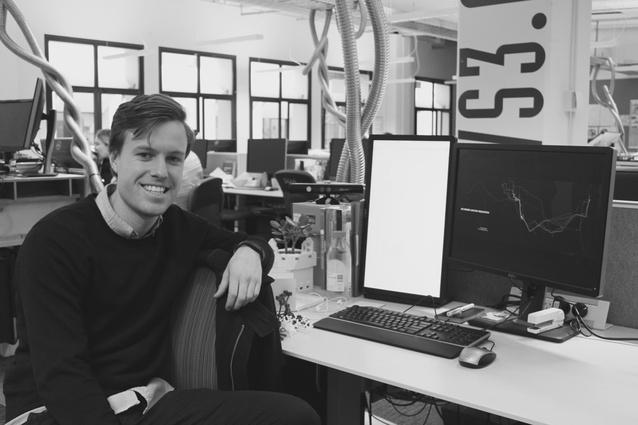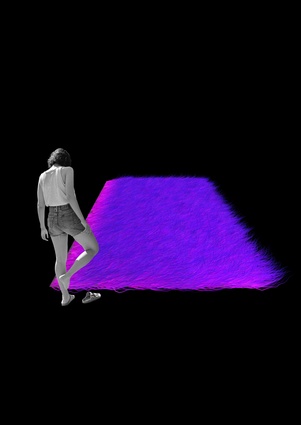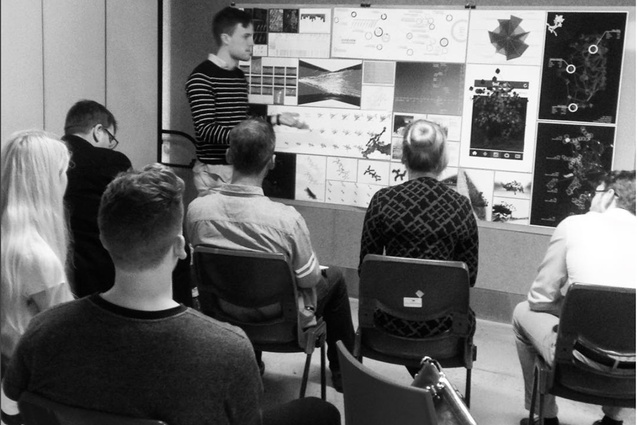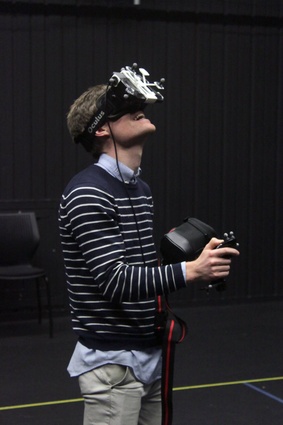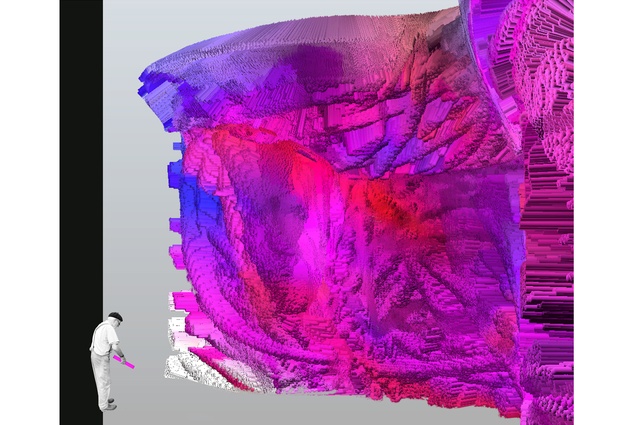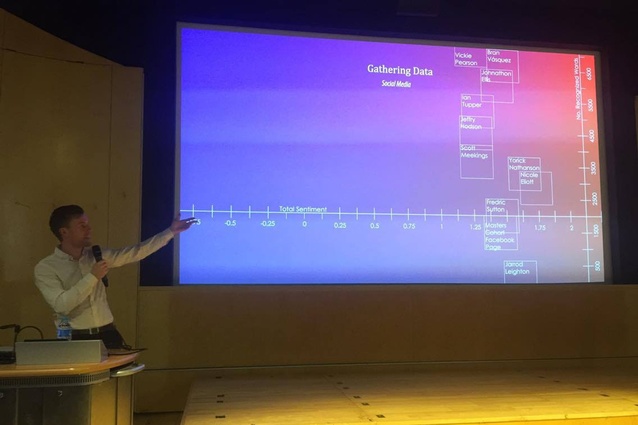Show Us Your Thesis: Scott Meekings
ArchitectureNow and the Student Architecture Network New Zealand (SANNZ) have teamed up to present an interview series on the work and thoughts of final year Master of Architecture students at New Zealand's three schools of architecture: Victoria University of Wellington, The University of Auckland and Unitec Institute of Technology.
Up first is Scott Meekings from Victoria University, who discusses his digital-focused thesis, what helps gets him through architecture school and what time of the day, according to data, he's most happy.
Student Architecture Network New Zealand: In 20 words, what is your thesis about?
Scott Meekings: I’m looking at how data can influence architecture. It’s becoming common for companies to collect heaps of data on people so they can personalise lame things like ads and insurance prices but I think this personalisation has some cool potential for architecture too.
SANNZ: Who is your supervisor and why did you choose to work with him/her?
Scott: My supervisor is Marc Aurel Schnabel, I first met him when he was my tutor for a project in fourth year, then in summer I worked with him and one of his PhD students to digitally recreate a village in China. I found that he was pretty switched on when it comes to the philosophy behind the digital processes that I’m interested in, so it was an easy enough choice. Also, no other name rolls of the tongue like Schnabel.
I also have to give a shout out to Tane Moleta who doesn’t supervise my thesis but does supervise my general architecture life and is always pushing me to trade traditional architecture for the shiny digital realm.

SANNZ: When you started your Masters just over a year ago at the start of fourth year, did you think your thesis would take this direction?
Scott: Nope. I didn’t really have a solid direction in mind at the start of the year but all the ideas I had that seemed revolutionary at the time now seem like absolute rubbish so I have no complaints about the experimental direction it’s ended up taking. Although some days I have to admit I feel like just whipping out a couple of pretty renders to remind myself I’m studying architecture, and not computer science or statistics.
SANNZ: What are your plans for next year?
Scott: I’m going to move up to Auckland and will hopefully start working in a firm there (if you’re reading this and need to employ a new grad…).
SANNZ: Do you feel that architecture school has prepared you for the realities of working in the industry?
Scott: It’s so hard to tell without actually working in the industry full-time. I work part-time at a small firm here and have found the skills (particularly the software) to be super useful. There are definitely some gaps in our knowledge with real-world constraints (what do you mean ‘within budget’!?), but overall I think Uni gives us some skills that wouldn’t have been cultivated within industry but that can still be really beneficial in practice.
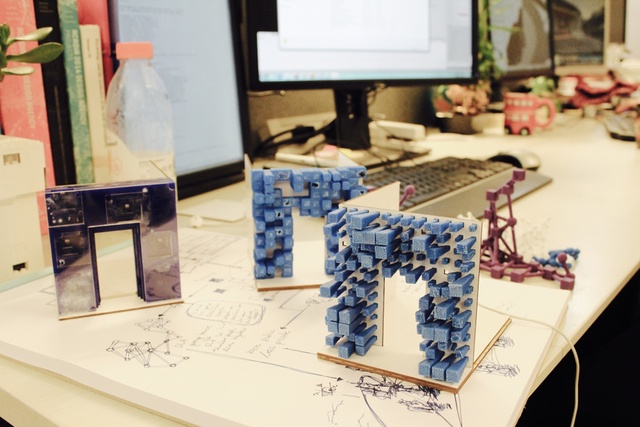
SANNZ: Do you work while studying; if so, how many hours? How do you find the balance?
Scott: I do a few hours for a local architecture firm but this is pretty minimal this year so that I can focus on my studies. The scholarship gods have blessed me with some monthly payments that make balancing buying brunch and paying rent a bit easier. I’m also into tutoring which is a great way to make some cash without even having to leave the building.
SANNZ: What music or artist has helped you get through architecture school?
Scott: I’m really into hype, rap music. It seems to clash with people’s perception of me but there is nothing that wakes you up faster on a slow Monday morning in studio. Kanye and Jay-Z’s ‘Watch the Throne’ is definitely the album I’ve played the most while at architecture school but recently it’s been Skepta and Run the Jewels.
SANNZ: What coffee has fuelled your degree and where do you usually buy it from?
Scott: I make plunger coffee every morning before I leave for school (even if I’m running late). I’m too cheap to start buying ‘real’ coffee everyday. What I like about plunger coffee is there is so much variety to choose from so I buy a different one every time I run out.
SANNZ: Where are you from? What’s your opinion of the architecture or built environment there?
Scott: Hamilton, enough said.
SANNZ: What keeps you occupied outside of study?
Scott: There’s an outside? Kidding aside, I’m into Ultimate Frisbee (if you’re unfamiliar with it then that image in your head is probably way off), and going to the gym if I’m not being lazy.
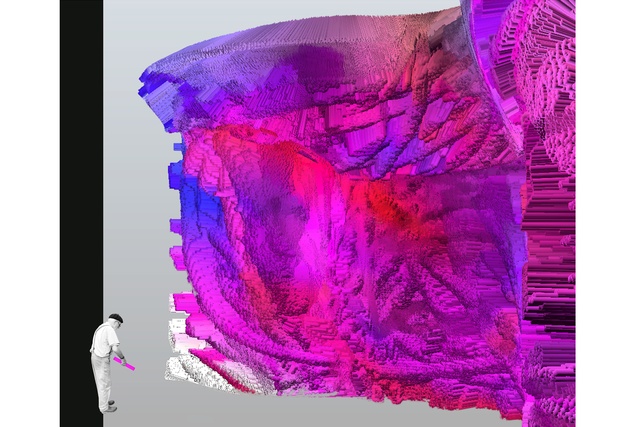
SANNZ: If you could invite two architects to dinner with you, who would they be and why?
Scott: Le Corbusier, I don’t care if he’s the most generic famous architect of all t
ime. He’s probably the most influential architect ever. His chosen pseudonym is loosely ‘The Raven’ but he was still respected, how!? — surely he’s the weirdest and most fascinating architect to have dinner with. My flatmates mock me for only eating white food like eggs on toast or chicken carbonara (sans bacon), I think Corb would be down with the aesthetic of my accidentally colourless diet.
The other would probably be Kengo Kuma although only if his English is better than my Japanese. Or perhaps Jeff Fearon or Tim Hay from Fearon Hay Architects because I’ve been looking through their work for inspiration recently and it could be cool to hear from an Auckland local before I move there.
SANNZ: Can you name a highlight from your time at architecture school/favourite project?
Scott: I’ve been putting together a portfolio website recently, which has been a fun way of reviewing all my work. I don’t know if I have a favourite project but I definitely have a soft spot for my fourth year work with Marc Aurel Schnabel as my tutor, which lead into my thesis. I think the work I under-appreciated the most is all the construction drawings which in hindsight are really attractive as full documents.
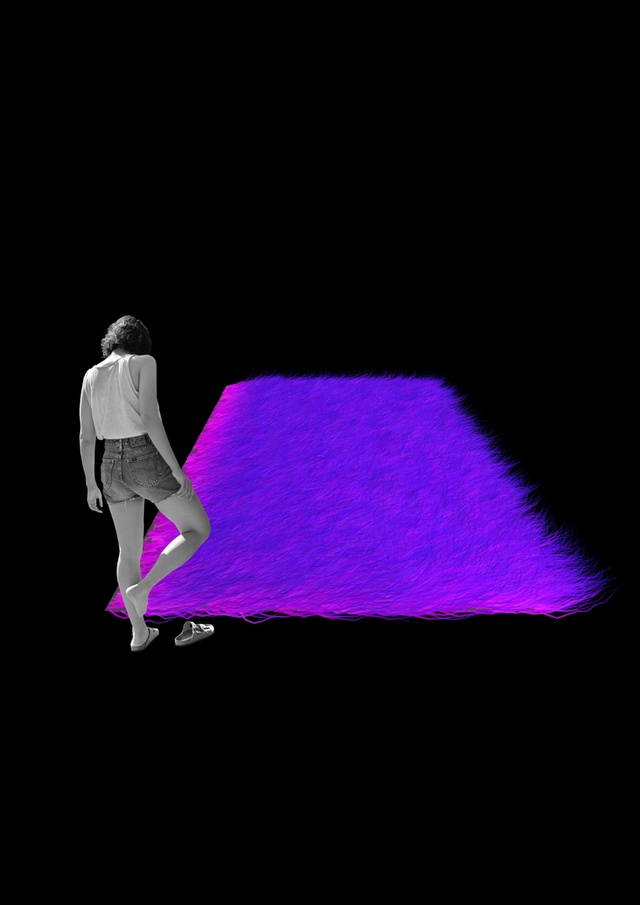
SANNZ: What work hours do you keep, and how do you feel about potentially moving into a 40-hour work week?
Scott: Because I’ve been collecting lots of data for my thesis I can actually work out how long I work for. I average 41 hours, 59 minutes and 54 seconds per week at the university building currently, although this includes two weeks when I was in Bali and not coming to Uni at all. Based on this, I assume the move to a 40-hour week will be pretty natural.
SANNZ: What is your favourite time of day?
Scott: According to data I have collected this year, my overall happiness throughout the day begins low (I hate mornings) and then trends upwards all day — the exception being midday which is notably higher, presumably due to a lunch break.
The data says this continues after work and my highest happiness ratings occur between midnight and 1am but I’m also almost never awake at that time so the data might be a bit skewed. It’s strange what data can tell you, because I would have guessed my favourite time was in the afternoons when I’m stuck into my work but have also done all my admin, emails, etc.
SANNZ: Who is your biggest support person at the moment?
Scott: My girlfriend Georgia — she brings coffee to my desk on her days off and her grandma cooks me wontons.
The Show Us Your Thesis series is thanks to the Student Architecture Network New Zealand and to the students involved. Read more interviews here.

